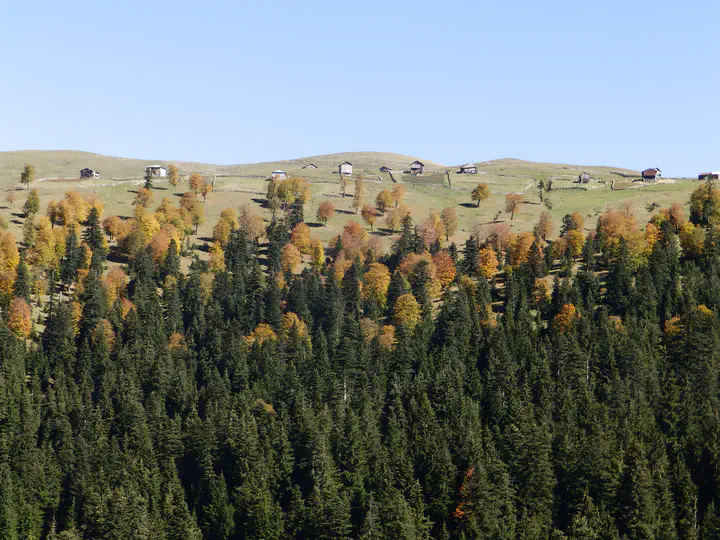Different social-ecological disturbance regimes, but similar forest structures in the Alps, Carpathians, and Caucasus

Context
Ecosystem services provided by mountain forests are critically linked to forest structure. Social-ecological disturbance regimes (i.e., the rate, frequency, and patch size distribution of disturbances driven by interacting natural and anthropogenic processes) and land use affect forest structure, but their specific impacts are not fully understood.
Objectives
we examine how differences in disturbance regimes affect patterns of forest structure across three European mountain ranges with similar vegetation types but different land-use histories: the European Alps, the Carpathians, and the Caucasus.
Methods
we related data on horizontal and vertical forest structure, measured by spaceborne lidar (GEDI), with Landsat-derived information on forest disturbances (1986–2020) and topographic, climatic, and anthropogenic predictors.
Results
we found similar social-ecological disturbance regimes in the Alps and Carpathians (average annual disturbance rates of 0.34% and 0.39%, respectively, and median patch size < 0.5 ha), yet much lower disturbance rates and patch sizes in the Caucasus (0.08% yr−1 and < 0.2 ha). Despite different disturbance regimes, we found similar patterns of forest structure. Two alternative states emerged consistently across all mountain ranges: a tall and closed-canopy state in 74–80% of forests and a low and open-canopy state (< 50% canopy cover) in the rest. While forest structure responded consistently to abiotic drivers such as topography and climate, its association with anthropogenic pressures differed between mountain ranges. Stand-replacing disturbances played an important role in the Carpathians, while forest structure in the Caucasus was related to proximity to settlements, reflecting local forest use.
Conclusions
different social-ecological contexts in mountain regions can produce markedly different forest disturbance regimes. Despite these differences, similar states of forest structures emerge, suggesting strong attractors of structure in temperate mountain forests.